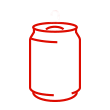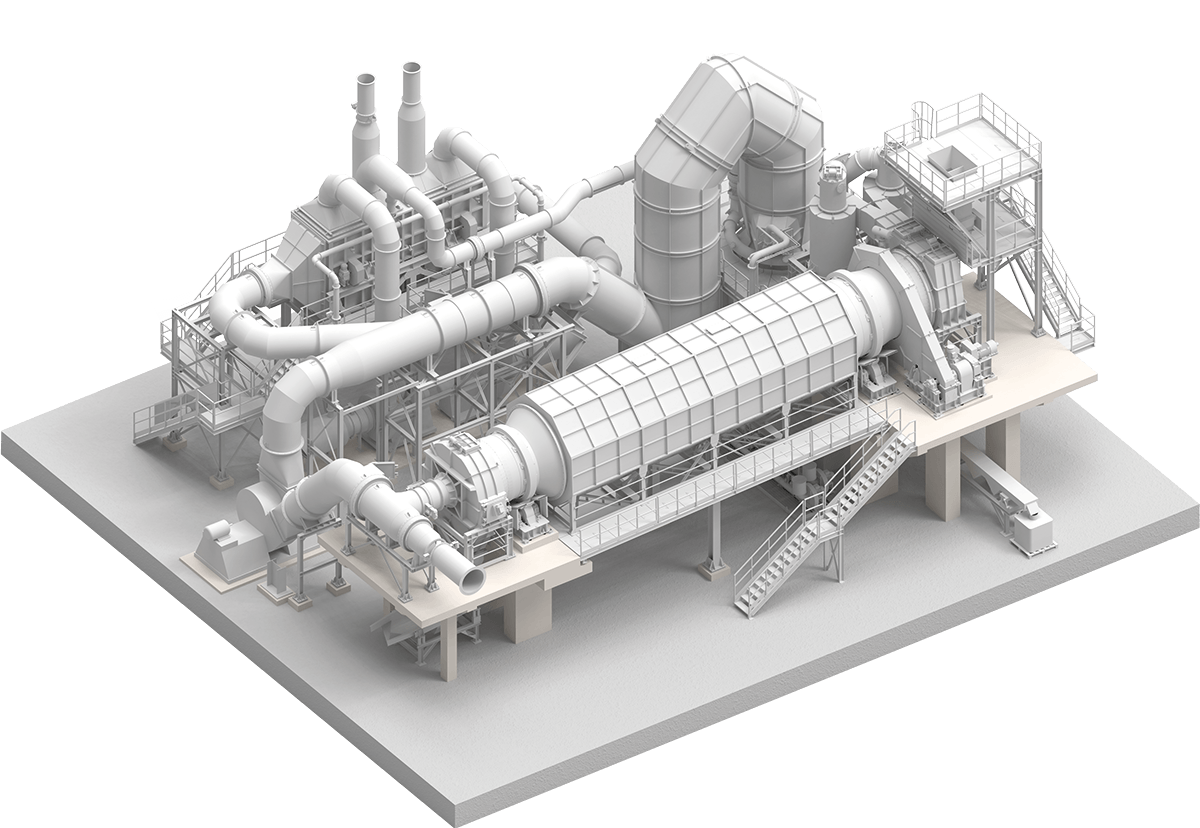

The de-coating is a thermal treatment applied on the aluminium scrap, used to remove from the surface of the material all the contaminants as paper, oil, links, paint, plastic.
The aluminium scrap is used as “raw material” to produce new aluminium but before to be molten again has to be “cleaned”, i.e. treated inside a de-coating unit, in order to reach the specific characteristics requested. If the scrap is not cleaned (de-coated) and is molten directly inside the furnace, the metal loss increases and the presence of contaminants in the furnace might create problems to the use of the regenerative burners, producing at the same time an additional cost of the natural gas used in the melting. The cleaning process is based on heating the aluminium scraps in a controlled low oxygen atmosphere, through direct convective exchange with exhaust fumes, which have been processed into post-combustion chamber. The experience on existing pyrolysis plants, allow to cover the following scraps: turning, cover, ground, cans, tubes or caps, cables, sheets laminated with paper or plastic, sheets coated.
Environmental and economic advantages:

Materials are dosed to the pyrolyzer by conveyor belt and clapet valves.
Waste fed into the rotating kiln, meet in counter-current hot flow gas with the necessary characteristics to carry out water evaporation, pyrolysis of organic substances and then a good gasification of coke residue, thus wiping aluminium material without affecting its original characteristics.
The hot recycled stream, gas-rich pyrolysis, leaving the Decoater is processed in dust extractor cyclone for removing the small particles from the process.
Pyrolysis gases and fumes after cyclones are injecting into the post combustion chamber for complete oxidation of suspended organics by which the gases are enriched after pyrolysis process.
The product of the combustion, leaving the post combustion chamber, enter into the indirect heat exchanger and cooled by atmosphere air. The part of hot fumes that are not recirculated into the system are sent to the gas cleaning system before their discharging to the atmosphere through the stack.
During the decoating process of aluminium scraps (aluminum of profiles and UBC), VOC, PAH (polycyclic aromatic hydrocarbons) and other pollutants are transformed into process gases containing substances harmful for the health and the environment which must be received and appropriately treated before being released into the atmosphere.
These harmful process gases developed during the process must be thermally treaded inside of a post combustion chamber where they are brought to a minimum temperature of 800 ÷ 850 °C.
The residence time in the combustion chamber changes with the quantity of the exhaust treated.
Under these conditions all the organic pollutants contained in the exhaust gases are completely oxidized.
The gas cleaning system consist of an acid gas absorption with reagent dosing followed by a bag filter. Dust collection will be performed through the selfcleaning system with compressed air.
Then, exhaust gases will be thermally treated by an high efficiency thermal oxidizer (CEBA CLEAN) which bring the exhaust gases to high combustion temperature. Treated gases are then conveyed to a dedicated stack.